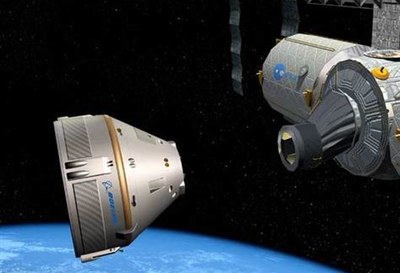Why commercial human spaceflight will be safer, less expensive, and necessaryby Owen Garriott and Alan Stern
|
| There is now a growing consensus that our path into the future should lie in promoting a commercial human space launch program in LEO, and that such systems will be substantially safer and less expensive than the space shuttle system they will replace. |
Fortunately now, concurrent with the shuttle’s retirement, several commercial companies have the ability to launch payloads—and, with relatively modest modifications, even human-rated vehicles—into low Earth orbit (LEO). These include Boeing and Lockheed Martin, through their United Launch Alliance joint venture; Space Exploration Technologies; and Orbital Sciences. One day not very far off these companies might also include the likes of ATK, Sierra Nevada, and Blue Origin.
Commercial firms argue that their experience in delivering payloads to the International Space S Station (ISS) using proven launch vehicles like Atlas 5 and Falcon 9 can be extended in a timely way into a human transport capability to LEO at reasonable cost. We think they are right.
We also think that commercial crew LEO transport has the potential (and, many believe, high probability) of providing crew transport at a far lower cost. And in addition to being less expensive to field than a full NASA development program, commercial crew should also come online more quickly, relieving our country of its soon-to-be-complete dependence on Russia for access to LEO and the ISS.
As a result of these factors, there is now a growing consensus that our path into the future should lie in promoting a commercial human space launch program in LEO, and that such systems will be substantially safer and less expensive than the space shuttle system they will replace.
Moreover, all of the new proposals for launch vehicles have some kind of integral launch abort/escape capability, just as our Apollo program had and which the Russian Soyuz has had for decades. As a result, in most launch and even reentry failure scenarios, a second independent failure is required before there will be a loss of crew. Even if, for example, the launch vehicle has a 1:50 risk of catastrophic failure, but the abort system has an independent 1:100 risk of failure, the consequent risk of crew loss would be only 1:5,000, which is certainly satisfactory and far superior to the shuttle system.
We conclude that the enhanced crew safety, lower costs, faster time to initial operational capability and resultant greater independence of the US for meeting its human spaceflight needs mean that these vehicles offer a highly attractive option for our space program. We believe that the development of such commercial crew capabilities is imperative for the future of human spaceflight in the United States, and we urge Congress to fully fund the development of commercial crew capabilities in the fiscal year 2011 and 2012 NASA spending bills.
